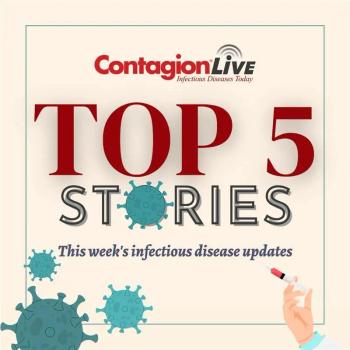
Looking at Mortality Rates Comparing Treatments for Gram-Negative Resistant Pseudomonas aeruginosa Infections
Pranita Tamma, MD, MHS, discusses the motivations comparing ceftolozane-tazobactam and ceftazidime-avibactam and findings of one observational study.
Episodes in this series

This is the first in a series with Pranita Tamma, MD, MHS, associate professor of pediatrics in the Division of Pediatric Infectious Diseases at The Johns Hopkins University School of Medicine, and is a discussion about these antibiotic therapies for gram-negative resistant Pseudomonas aeruginosa infections and the latest data supporting these decisions.
In one retrospective observational study, which compared ceftolozane-tazobactam and ceftazidime-avibactam and was funded by the National Institutes of Health (NIH), the findings showed similar 30-day mortality rates but higher resistance emergence in the ceftolozane-tazobactam group (38% vs 25%). Tamma was the senior investigator in this trial.
Enclosed below are responses from a conversation with her about this trial as well as other data on this topic.
Contagion: What were the key motivations for conducting a head-to-head comparison of ceftolozane-tazobactam and ceftazidime-avibactam in treating difficult-to-treat resistant (DTR) P aeruginosa infections?
Pranita Tamma, MD, MHS: We really wanted to compare the clinical outcomes of these 2 drugs that clinicians are preferentially deciding between for treating DTR Pseudomonas, and we also wanted to understand how likely emergence of resistance will be. We had a smaller previous study that only looked at ceftolozane-tazobactam, but it was 28 patients exposed to this drug and with clinical infections with DTR Pseudomonas. And we found, surprisingly, that for half of the patients, even though their index Pseudomonas isolate was susceptible to ceftolozane-tazobactam, they developed isolates in the next 30 days with resistance to the drug. And it was pretty impressive: The resistance MICs [minimum inhibitory concentrations] would go from 0.5 to greater than 256, so we wanted to see how frequently this actually happened by looking at a larger cohort, although by comparing it with ceftazidime-avibactam. To put the results in context, the study we did was funded by the NIH, and I think that's important because there have been 2 other observational studies in the past year or two that have answered [and] addressed a similar question, comparing outcomes of ceftolozane-tazobactam and ceftazidime-avibactam. We felt that it was important to go into this unbiased. We didn't actually have a hypothesis of which drug might perform better or which drug might lead to less resistance.
Contagion: The study results found similar 30-day mortality rates between the 2 treatment groups. What does this suggest about their comparative effectiveness in managing DTR infections?
Tamma: We elected to use 30-day mortality as our primary outcome. Many studies use 90-day mortality. We felt that to really increase the likelihood that the clinical outcome was related to the treatment received, it's nice to have a shorter window. You could imagine these are complex patients, and if we're looking at mortality out to 90 days, we could start to run into issues, like people died because of their underlying cancer, failure of their solid organ transplant, or another infection that they developed. So there's a whole host of reasons we chose the 30-day end point.
We also chose mortality, as opposed to clinical cure, because we feel like it's the most objective end point. There's no subjectivity involved, especially when you're talking about an observational study, which is open label, where we know exactly what people received. You could imagine that most of the patients in our study and the other 2 observational studies recently published had pneumonia. Pneumonia can be very subjective because cultures can stay positive for days or weeks because of colonization, noninfection. Patients can stay on a ventilator because of other underlying conditions. They can stay in the ICU [intensive care unit] because of chemotherapy, adverse events, and all sorts of other reasons like a concomitant influenza infection, etc. It becomes very hard, even if we try to make definitions for clinical cure, to decide, and even in clinical trials, sometimes what the investigators consider cure and independent adjudication committees consider cure have significant differences. So that's why we chose to look at mortality as our primary end point. And you know, it was nice to see that there wasn't a difference in mortality.
As a clinician, I would love to see more drugs available rather than fewer. So at least in the study we performed as well as the 2 other observational studies, none of us found a mortality signal suggesting one of these drugs is more likely to cause poor outcomes vs the other, which I think is a good thing for the infectious diseases community and for patients with these infections.
The conversation was edited for grammar and clarity.
Newsletter
Stay ahead of emerging infectious disease threats with expert insights and breaking research. Subscribe now to get updates delivered straight to your inbox.






